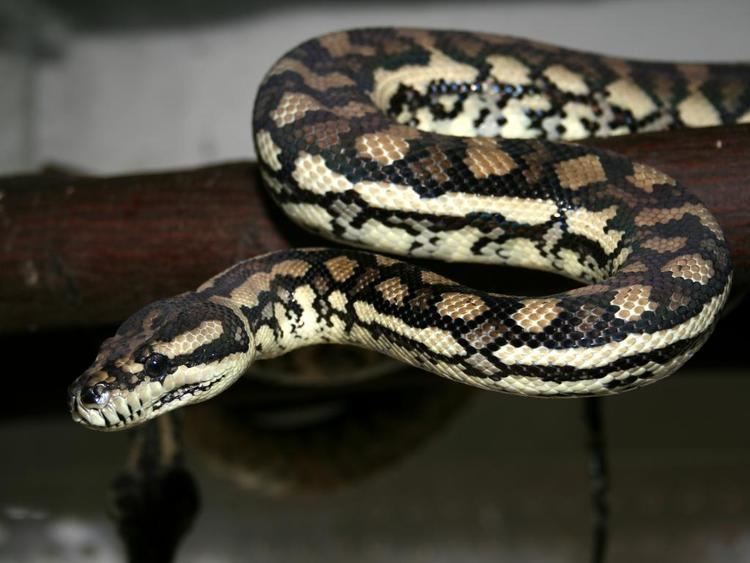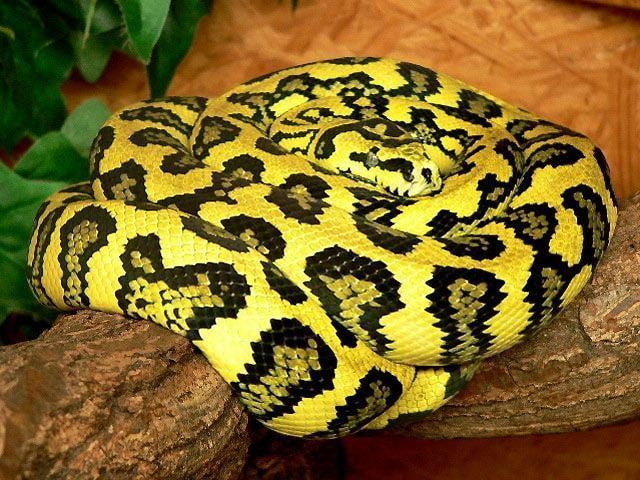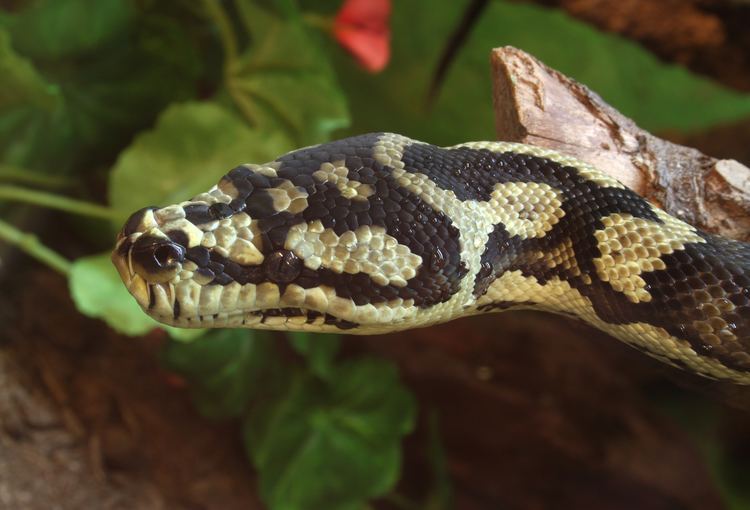Subphylum Vertebrata Suborder Serpentes Rank Species | Phylum Chordata Higher classification Morelia | |
 | ||
Lower classifications Morelia spilota cheynei, Morelia spilota variegata, Morelia spilota mcdowelli, Morelia spilota metcalfei, Morelia spilota imbricata | ||
Morelia spilota, commonly referred to as carpet python and diamond pythons, is a large snake of the family Pythonidae found in Australia, New Guinea (Indonesia and Papua New Guinea), Bismarck Archipelago, and the northern Solomon Islands. There are many subspecies; ITIS lists six, the Reptile Database seven, and the IUCN eight.
Contents
- Diamond python morelia spilota big snake australia hd video 01
- Description
- Reproduction
- Behaviour
- Diet
- Geographic range
- Habitat
- Conservation
- Captivity
- Subspecies
- Naming and taxonomy
- References

Diamond python morelia spilota big snake australia hd video 01
Description

Morelia spilota is a large species of python in the genus, reaching between 2 to 4 metres (6.6 to 13.1 ft) in length and weighing up to 15 kilograms (33 lb). M. s. mcdowelli is the largest subspecies, regularly attaining lengths of 2.7–3 m (8.9–9.8 ft). M. s. variegata is the smallest subspecies, averaging 120–180 cm (3.9–5.9 ft) in length. The average adult length is roughly 2 metres (6.6 ft). However, one 3-year-old captive male M. s. mcdowelli, measured in Ireland, was found to exceed 396 cm (12.99 ft). Males are typically smaller than females; in some regions females are up to four times heavier. The head is triangular with a conspicuous row of thermoreceptive labial pits.

The colouring of Morelia spilota is highly variable, ranging from olive to black with white or cream and gold markings. The patterning may be roughly diamond shaped or have intricate markings made up of light and dark bands on a background of gray or a version of brown.
Reproduction

The species is oviparous, with females laying 10–50 eggs at a time. Afterward, females coil around the eggs to protect them and keep them warm through using muscular contractions to generate heat. This type of maternal care, which is typical for pythons, ceases once the hatchlings have emerged.
Behaviour

Described as semi-arboreal, they are largely nocturnal, climbing trees and shrubs as well as crossing open areas such as rock faces, forest floors and even roads. However, basking behaviour is commonly observed.
Diet

Carpet pythons kill prey by constricting it until it suffocates. Their diet consists mainly of small mammals, birds, and lizards. Incidents of carpet pythons devouring small dogs have been reported.
Geographic range
The species is found throughout mainland Australia, with the exception of the arid centre and the western regions. It is widely distributed throughout the forest regions of Southwest Australia. It is also found in Indonesia (southern Western New Guinea in Merauke Regency), Papua New Guinea (southern Western Province, the Port Moresby area of Central Province), and on Yule Island. The type locality given is "Nouvelle-Hollande" [Australia].
Habitat
Occurs in a wide variety of habitats, from the rainforests of northeastern Queensland (M. s. cheynei) through the River Red Gum/Riverbox woodlands of the Murray and Darling Rivers (M. s. metcalfei), to the arid, treeless islands of the Nuyts Archipelago off the South Australian west coast (M. s. imbricata). They are often found near human habitation where they perform a useful service by eating rats and other vermin. Morelia spilota is known to occur in areas that receive snowfall. Morelia spilota are (semi-arboreal) tree snakes; they do not completely rely on trees, however, and are capable of moving around elsewhere. Morelia spilota are also found in temperate grasslands with hot and dry weather.
Conservation
Morelia spilota is not threatened as a species. The nominate subspecies, Morelia spilota spilota, is listed as threatened with extinction in Victoria. The subspecies M. spilota imbricata is regarded as near threatened in Western Australia, due to loss of habitat.
Captivity
This species is a popular pet among snake enthusiasts. Some forms can be more irascible than others, such as M. s. mcdowelli and M. s. variegata. Forms that tend to be more even tempered include Morelia spilota and M. s. metcalfei. However this is not a hard rule. Although they can grow to a reasonable size (2–3.5 m) and can be nippy as hatchlings, most will grow into docile adults. However, care must be taken when feeding, as these snakes have a strong "feeding response" behaviour that can be mistaken for aggression. Captive specimens are normally fed live or frozen (defrosted to room temperature) rats. They may have a lifespan of 15 to 20 years.
The care requirements can be generalized for all subspecies. The subspecies Morelia spilota spilota, the cold weather Diamond python, has some separate requirements and habits.
Subspecies
The geographic distribution and common names can summarized as follows:
Naming and taxonomy
The first description of Morelia spilota was by Lacépède (1804), who placed it in the genus Coluber as Coluber spilotus. The species has since been described by various authors as containing a number of subspecies and hybrids, these have also been known by various informal names. The attempted arrangement of taxa in this, and other, Australasian Pythonidae has produced numerous synonyms. The discrete and roaming habits of this species have produced a low number of recorded specimens, giving inadequate sample numbers to support descriptions of a taxon's morphology. This is the case with proposed names which are sometimes cited, such as the Papuan Morelia spilota harrisoni (Hoser), despite being unaccepted or invalid. Common names are regional variants of carpet and diamond python or snake.
The following is an incomplete list of synonyms:
